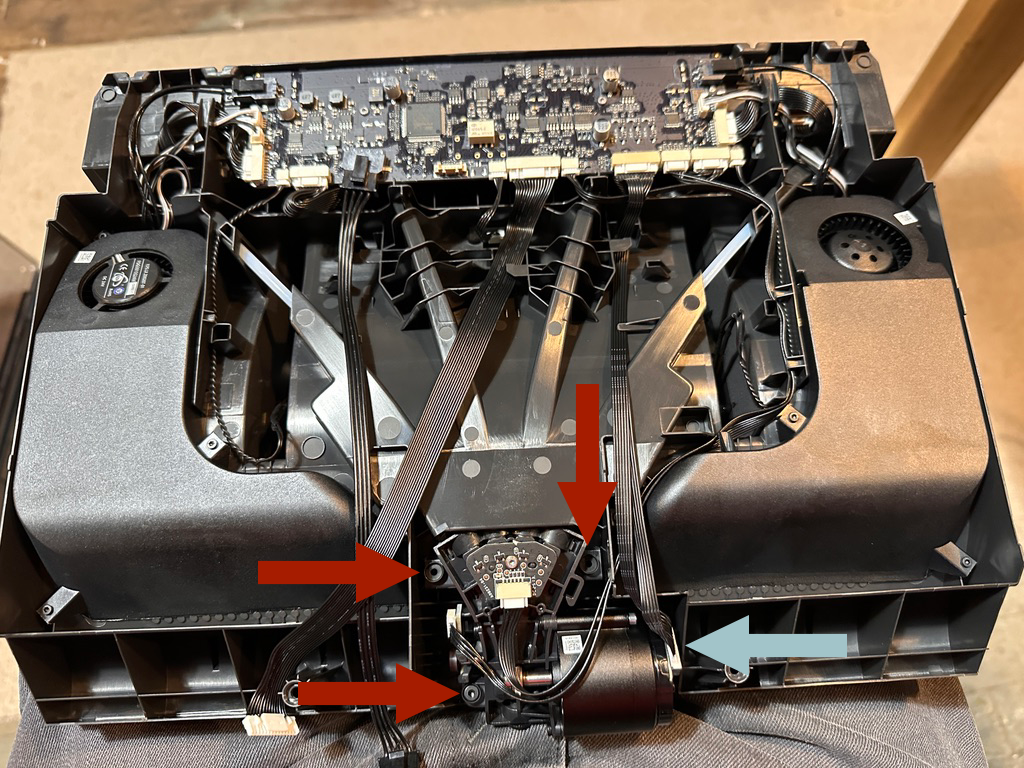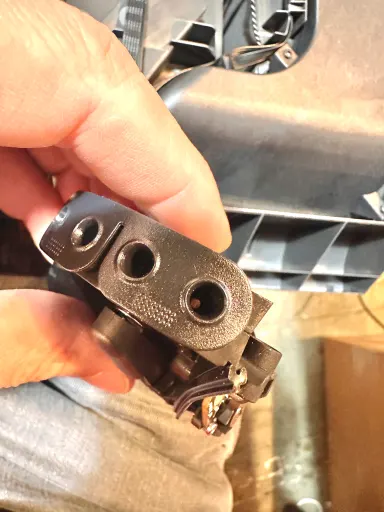Removing Stuck Filament from the Bambu AMS 2
The Bambu AMS 2 Automatic Material System is a peripheral unit that provides multi-filament selection and feed management for several Bambu Lab FDM printers. I use it with a P2S printer and have generally been satisfied with its operation. However, as with any printer, filament breakage does occur. Because filament in the AMS 2 is routed through a complex network of PTFE tubes, drive gears, and internal manifolds, removing broken fragments can be substantially more difficult than on single-extruder systems.
Typical AMS 2 jam scenario
In the simplest case, a jam is resolved by disconnecting the internal PTFE tube from the filament hub and manually withdrawing the broken filament. If all material is removed at that stage, the system usually recovers without further intervention.
However, brittle or poorly dried filament can fracture into multiple pieces and lodge deeper in the feed path. I encountered exactly this failure mode with a degraded spool that had likely absorbed significant moisture. Clearing the final retained fragment required partial disassembly of the AMS 2.
Symptom: persistent lane jam after clearing PTFE
In my case, the printer firmware reported a jam in lane 1. I removed the internal PTFE tube and extracted multiple fragments. After reassembly, the AMS 2 continued to report an error. Because of the extent of the fragmentation, I assumed additional material remained further downstream.
Using narrow angled tweezers, I probed inside the hub collar where the internal PTFE tube normally seats. I could intermittently feel resistance but could not visually confirm or reliably grasp the obstruction.
Accessing the filament hub underside
To gain direct visual access, I followed the official AMS 2 disassembly documentation up through removal of the main frame assembly.
This exposes the underside of the filament hub. Mobilizing the filament hub requires:
- Removal of three mounting screws
- Careful disconnection of the ribbon cable from the base of the stepper motor

Once freed, the hub and stepper motor assembly can be rotated forward, allowing a direct line-of-sight down the bore of the hub where the internal PTFE tube connects. At this point, a retained filament fragment was clearly visible.

Extracting the final fragment
Using long, thin angled tweezers intended for SMD rework, I was able to grasp and remove the final fragment. The extracted piece measured approximately 4–5 cm. Once removed, the jam condition fully cleared.
Critical reassembly note: silicone isolation strips
There are small silicone rubber isolation strips located between the filament hub and the AMS frame. These are not mechanically retained and rely solely on gravity for positioning.
During reassembly:
- Manually position the silicone strips against the frame first
- Rotate the hub, motor, and electronics assembly back into place
- Reconnect the stepper motor ribbon cable
- Reinstall the three hub mounting screws
The remainder of the AMS is then reassembled by reversing the earlier disassembly steps.
Failure mode considerations
It is possible for filament fragments to lodge deeper inside the filament hub mechanism itself. That condition would require further disassembly beyond what is documented here. Fortunately, this was not necessary in this case.
The AMS 2 is mechanically robust, but its long and complex filament path makes it inherently sensitive to brittle filament and moisture-induced fracture. This incident strongly reinforces the importance of proper filament drying before use.
If you have questions or additional observations on AMS 2 jam behavior, feel free to reach out: contact page.
